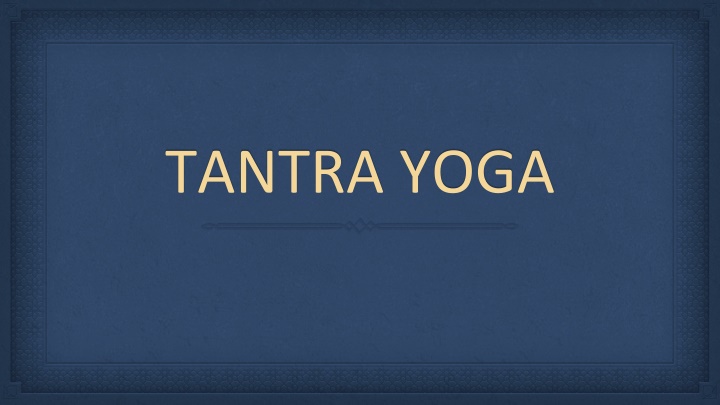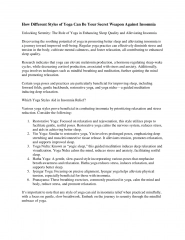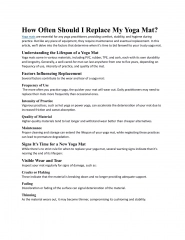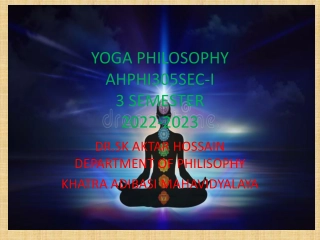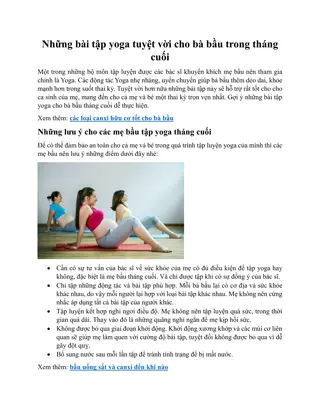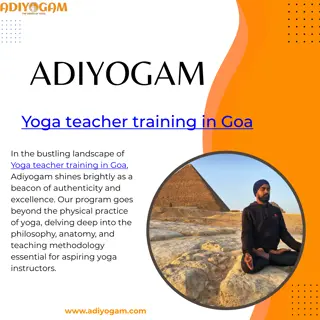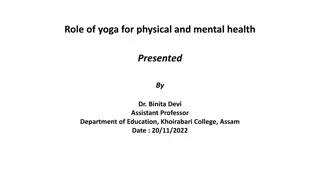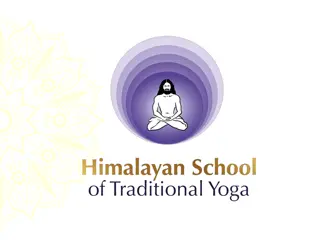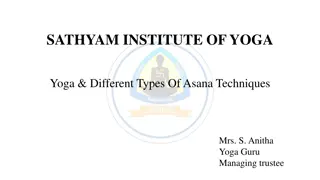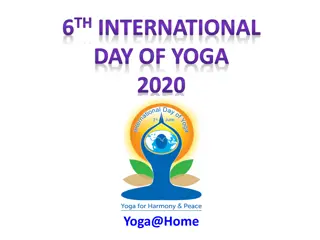TANTRA YOGA
Tantra yoga, derived from the root 'tan' meaning extension, focuses on unfolding inner states as one progresses towards realization. With teachings from Lord Shiva, tantra aims for moksha while embracing physical pleasures. It involves practices like Marana, Mohana, Vashikaran, and emphasizes mantra for worldly prosperity. Explore the paths of yoga Sadhna, particularly the Vama Marga, for spiritual growth through tantra yoga practices.
Download Presentation

Please find below an Image/Link to download the presentation.
The content on the website is provided AS IS for your information and personal use only. It may not be sold, licensed, or shared on other websites without obtaining consent from the author.If you encounter any issues during the download, it is possible that the publisher has removed the file from their server.
You are allowed to download the files provided on this website for personal or commercial use, subject to the condition that they are used lawfully. All files are the property of their respective owners.
The content on the website is provided AS IS for your information and personal use only. It may not be sold, licensed, or shared on other websites without obtaining consent from the author.
E N D
Presentation Transcript
Tradition of tantra Tantra is derived from root tan means to extend or unfold. It means to expand or extend. This represents extension of purely physical plane & unfolding of inner states, as the aspirant progresses along the path to realisation. It deals with subtle fields at psychobiological & cosmic levels. Tanu trayate iti tantrah - That which protects the body is known as tantra. Tantra means to explain some thing secrete. Tantras are teachings of lord Shiva as perceived by his students & written in the form of tantras. Lord Shiva is the profounder of tantra so is of higher importance for lord shiva
In tantra it is believed that the empirical soul is bounded with body by the philosophical impurities enveloped by illusion/ Maya in the form of panchkancuka Main aim of tantra yoga is to achieve moksh/ salvation, while enjoying the physical pleasures, through tantra Sadhna . The person with predominance of tamas & rajas qualities, can attain liberation through middle path that is, Panchamakara they are - Matsya, Maithuna, Mudra, Mamsa, & Madira.
This yoga also advocates Marana, Mohana, Vashikaran, Viratana, Vidvedsana etc. Mantra procures worldly prosperity When person fails to attain worldly treasure by his deeds, he can get it through tantra, mantra, yantra after worshipping god. Origin of tantra - is said to be agama, saivagama is the basis for all tantras
5 branches of agama Vaishnava agama which is further classified as pancharatra & vaikhanasa Sakt agama Kashmira-saiva-agama Siddhant -saiva -agama Vira-saiva-agama
Important Tantras 1. Malini-vijayotra tantra 2. Akshmata-siddha tantra 3. Vamakeshara tantra 4. Svacchanda tantra 5. Netra tantra
Paths of Yoga Sadhna There are two ways to achieve yoga Sadhna they are Dakshina marga - Patanjali yoga sutra, Upanishads Vama marga - Kaula, Virasaiva, Kashmira- saivaagama tantra So as here we will discuss the vama marga as this is the yoga sadhana with tantra yoga
Vama Marga Also known as Pravritti marga, sakaratmaka pantha Includes different actions to achieve liberation & emphasises on development of an individual through stages of life naturally with maturation & later ultimate goal that is moksh/ liberation or self realisation. Path believes that desires cannot be controlled till one experiences them & can never be destroyed it can only be modified into love, good feelings & good desires for wellbeing of others. Path believes sex as a desire Panchamakara (matsya, masa, madira, mudra, maithuna) is a way for liberation for rajasik & tamasik personality & path is for common people or for them who cannot control their desires completely.
Madira / Madya /Alcohol According to kularnava tantra tender cocunut water & milk together is madya. Also combination of madya is according to the caste. Brahmin - ginger juice + Jaggery Kshatriya - tender coconut kept in copper vessel Vaishya - tender coconut in bronze vessel Vijay tantra states that : bliss arising out of knowledge of brahman as Anand madya
Madira / Madya /Alcohol Lord Shankara considers union of kundalini (from muladhara to sahastrara) as madyapan. In this marga aspirant takes alcohol in midnight & chants or mantra chantings. By the constant practice of this mantra one can attain control over worldly desires & follow the path of sattva.
Mamsa / Flesh As per Yogini Tantra salt & ginger is considered as flesh & fish Kularnava tantra - considers salt, ginger, garlic, sesame & wheat as flesh. One should kill the animals like desire, hatred, greed, illusion with the sword, eat the flesh, eat the flesh of giving happiness to other beings.
Matsya / Fish Brinjal, radish are considered as fish - Kularnava tantra Analogy of Catching fish in the form of ego, intoxication/mada, abusing others, jealousy/matsara & hatred/dvesha & cooking it in the fire of good behaviour & eating this fish - Tantrattva Prakash
Mudra / Gesture Mudra - internal feelings of the practitioner The practitioner pleases his deity, visualises his god through the medium of mudras. Mudra helps to control desire, greed, ego, fear, hatred, anger, illusion etc. They stabilise the union of Prana & apana & results in firmness & balance of mind.
Maithuna / Coitus Considered as highest in tantra It means association of muladhara with sahastrara or union of shiva & Shakti / kundalini awakening
Concept of body in Tantra Tantra classifies body into 3 types - Sukshma, sthula & Karana & body consists of 17 parts they are : 1. Panchagyanendriya - eyes, ears, nose, skin, tongue 2. Panchakarmendriya - speech, hands, legs, anus, reproductive organs 3. Panchaprana - Prana, apana, samana, udana, vyana 4. Buddhi / intellect After death - body get new body as a shelter
Worship of Yantra in tantra Chakra - meeting of various nerves at a single point in spinal cord Yantra - various geometrical forms & points like triangle, rectangle, circle, hexagon, pentagon, svastika, star etc. symbols of alphabets, lotus, name of deity etc. Is used to fulfill worldly desires.
Goraksh Nath As hatha yoga is believed to be a part of tantra yoga Gorskshnath founded the Nath sampradaya/ tradition & siddha tradition also He was 19th Natha as per Natha Rahasya He was also known as Siva Gorakshnatha as he was manifestation of shiva himself.
Birth of Gorakshnath Gorakshnath was disciple of Matsyendranath who was incarantion of lord Vishnu. Once Matsyendranath was walking through a village, he stopped infront of a house & was offered meal. He asked women about her unfulfilled desires she asked him for child. So Matsyendranath give her ash & asked to eat it, when she told it to her neighbours they mocked at her foolishness later she threw the ash in garbage pit, he called out Alakh Niranjan & soon a boy comes out who later became Guru Gorakshnath.
Works of Gorakshnath Goraksh Samhita Goraksh gita Siddha Siddhant Paddhati Yoga Martanda Yoga Siddhant Paddhati Yoga Beeja Yoga Chintamani & so on
Thanks for watching Do check the description box for notes !
